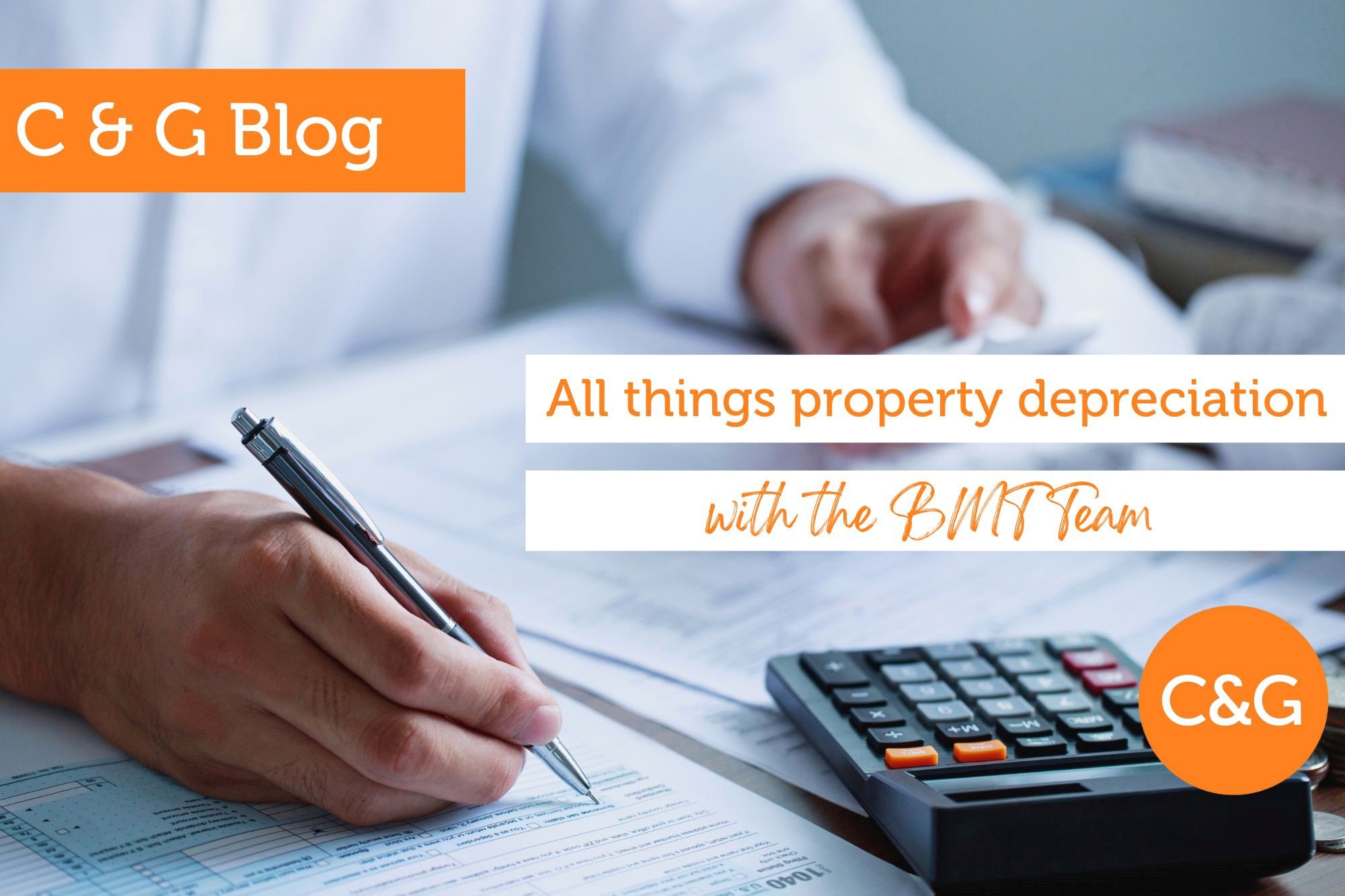Talking all Things Property Depreciation - with BMT Tax Depreciation
With the end of financial year just around the corner, we thought there’s no better time to invite the team at BMT to our C & G Blog to give our readers a little insight into this important and timely topic! Over to BMT Tax Depreciation…
Maximise the depreciation deductions on your investment property this tax time.
With the end of the financial year looming, property investors will be looking for ways to maximise the depreciation deductions on their investment properties to increase cash flow.
What is property depreciation?
Property depreciation is a tax deduction that allows property investors to claim the wear and tear of their investment property over time. Unlike other expenses, depreciation is a non-cash deduction, meaning it doesn’t require any out-of-pocket expenditure.
Property depreciation is divided into two main categories:
Division 40: Plant and equipment
Plant and equipment refers to the easily removable fixtures and fittings within the property. These items can be depreciated over their effective lives. Examples include:
- Appliances: Ovens, dishwashers, and washing machines.
- Furniture: Sofas, dining tables, and chairs.
- Carpet and flooring: Carpets, vinyl, and floating floorboards.
- Blinds and curtains: Window coverings.
These items have varying depreciation rates based on their expected lifespan, allowing you to claim a portion of their value each year.
Division 43: Capital works
Capital works deductions relate to the structural elements and fixed assets of the property and can be depreciated at a rate of 2.5% per year over 40 years. Examples include:
- Building structure: The cost of the building itself.
- Improvements: Extensions and structural improvements.
- Permanent fixtures: Sinks, baths, and built-in cupboards.
To fully leverage the benefits of property depreciation, it’s crucial to get a comprehensive tax depreciation schedule. Here’s how to maximise your deductions:
- Hire a specialist quantity surveyor: A quantity surveyor, like BMT Tax Depreciation, will assess and calculate the depreciation of a property over time. They can provide a detailed ATO compliant depreciation schedule tailored to your property, ensuring you claim every deduction that you’re entitled to.
- Conduct a thorough site inspection: A quantity surveyor will conduct a thorough inspection of your property to identify all depreciable assets. This ensures that nothing is overlooked, and all eligible items are included in your depreciation schedule, keeping in mind that both new and second-hand properties are eligible for significant depreciation deductions.
- Work with your accountant: Once you have your tax depreciation schedule, your accountant will use it to complete your tax return.
Property depreciation is a powerful tool that can significantly enhance your real estate investment returns by boosting your cash flow. By understanding the types of depreciation available and working with a specialist quantity surveyor to get an ATO compliant depreciation schedule, you can ensure that you’re taking full advantage of these tax depreciation benefits.
As Australia’s number one choice in property depreciation, BMT Tax Depreciation has completed close to 1 million depreciation schedules over almost 30 years and can assist you in maximising the depreciation deductions on your residential or commercial property. For more information contact them on 1300 728 726 or visit bmtqs.com.au for Australia-wide service.

